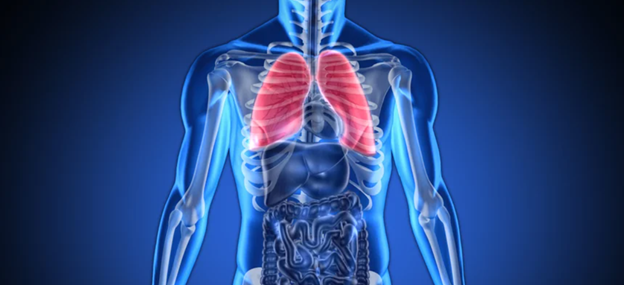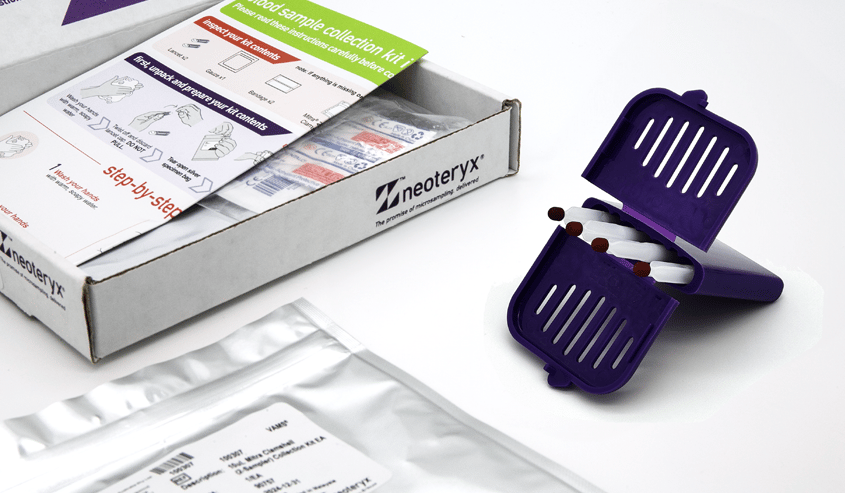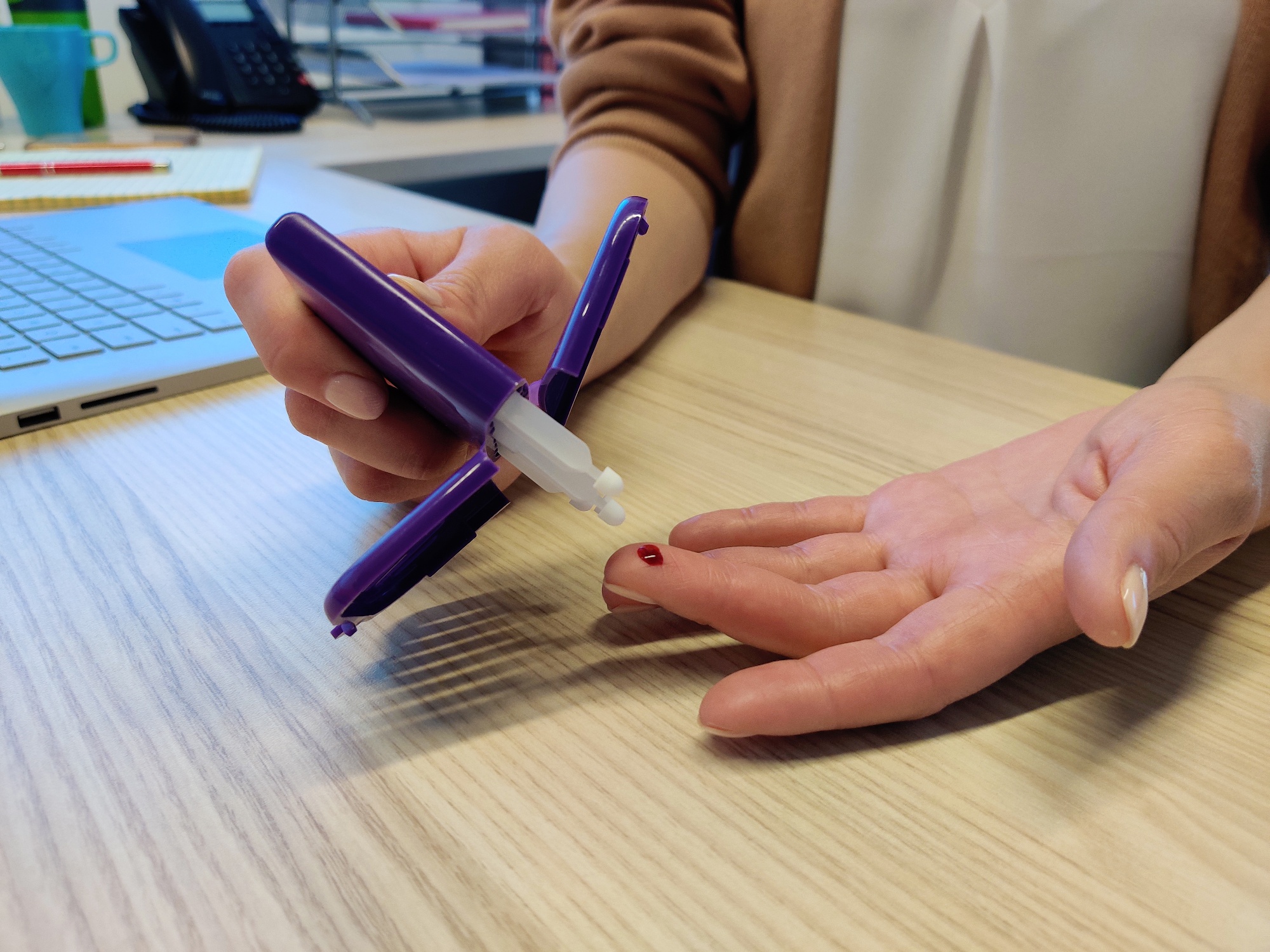Share this
early lung cancer detection using small RNAs for liquid biopsy
by James Rudge, PhD, Technical Director, Trajan on Apr 12, 2024 1:35:21 PM
An article by Tobias Sikosek and Rastislav Horos et al at Hummingbird Diagnostics GmbH in Heidelberg and 5 other institutions in Germany and the United States was published in the November 2023 edition of the Journal of Thoracic Oncology. Their article describes the development and validation of a liquid biopsy assay using small RNA (sRNA) molecules for early detection of lung cancer. Their paper is entitled, “Early Detection of Lung Cancer Using Small RNAs.” 
Using ultra-deep small RNA sequencing from blood collected from 1,384 individuals, the group identified an 18-small RNA feature consensus signature (miLung) which they independently validated. Moreover, they found that a specific feature (28S rRNAbin-162) was highly abundant in capillary blood collected on Mitra® devices based on VAMS® technology, even in early-stage cancers (ROC = 78.9%, stage IA).
What is ‘liquid biopsy’?
‘Liquid biopsy’ is a term used to describe a developing field of cancer diagnostics. It involves detection and quantitation of circulating tumor markers in the blood as a minimally invasive alternative to standard biopsy. The term was coined in 2010 by Catherine Alix-Panabières and Klaus Pantel in a review on circulating tumor cells (CTCs), where it had long been known that the shedding of cancer cells in the bloodstream were involved in the propagation. It was hoped that detection of these cells could offer a way to detect and monitor the progression of cancers.
Soon after the term ‘liquid biopsy’ was coined, it was determined that a more convenient way to perform liquid biopsy, would be to measure circulating tumor DNA (ctDNA) rather than the cells themselves. This discovery helped to catalyze a wealth of research on liquid biopsy for oncology. Indeed, a 2023 bibliometric analysis revealed that in the past 11 years, 6,331 papers had been published on liquid biopsy.
Liquid Biopsy Biomarkers and Lung Cancer
Circulating tumor DNA, or ctDNA, is now a very common biomarker for liquid biopsy assay research. However, for some types of early-stage cancer, detection is currently limited by insufficient analytical sensitivity. This has been attributed to low rates of shedding of ctDNA into the bloodstream by early-stage tumors and high background levels of non–tumor-derived cell free cf-DNA. This has proved to be the case for lung cancer, is reported to be the deadliest form of cancer, killing 2.1 million individuals worldwide every year.
According to Tobias Sikosek & Rastislav Horos et al, as cancers progress to stage IV, survival rates dwindle to 20 pack-years). Unfortunately, only ~3% of the 9 million who are eligible for this type of screening, participate in it.
It is hoped that a simple blood test that is included as part of a routine primary care check-up will minimize obstacles for screening and, thus, increase participation. If successful, this measure at the primary care level should have a positive impact on reducing lung cancer deaths, by facilitating cancer diagnosis at its earlier stages.
This is where a home sampling program with remote blood collection kits may prove to be useful. If patients and study participants are given an option for finger-stick capillary blood sample collection in a home setting, this makes access to screening more convenient and may negate the need for a lab visit to the phlebotomist.

Potentials and Challenges for Liquid Biopsy
As discussed above, there is high hope for liquid biopsy. However, due to sensitivity constraints, ctDNA is currently not a viable contender for early lung cancer diagnosis. Alternatively, Tobias Sikosek & Rastislav Horos et al proposed that RNA specifically small RNA (sRNAs) molecules are emerging as viable liquid biopsy biomarkers. The sRNAs represent a group of RNA molecules (usually around 22 base pairs in size) that are often more stable than mRNA due to an association with proteins.
Indeed, one such class of sRNAs (micro RNAs or miRNAs) have been identified as potential liquid biopsy markers for cancers. Not only can sRNAs derive directly from tumors in a similar way to ctDNA, but they also may act as molecular messengers. They can also arise from the immune system when it has responded to a tumor. This gives researchers another avenue to explore for unique tumor markers.  It is with the promise that sRNAs could be an ideal biomarker class for early detection of lung cancer that Tobias Sikosek & Rastislav Horos et al embarked on developing a liquid biopsy approach. Within their study, the group also evaluated the use of 10 µL remote Mitra® microsampling devices to assess if any discovered biomarkers could also be reliably measured from remotely collected finger-stick blood samples.
It is with the promise that sRNAs could be an ideal biomarker class for early detection of lung cancer that Tobias Sikosek & Rastislav Horos et al embarked on developing a liquid biopsy approach. Within their study, the group also evaluated the use of 10 µL remote Mitra® microsampling devices to assess if any discovered biomarkers could also be reliably measured from remotely collected finger-stick blood samples.
Liquid Biopsy Study Approach and Findings
The researchers recruited 1,384 volunteers with a demographic that met national eligibility criteria for lung cancer.- Collected stabilized venous blood for ultra deep RNA sequencing using PAX-gene tubes.
- Using 943 recruits, they were able to discover an 18-small RNA feature (miLung).
- Using the remainder of the cohort, they validated the signature and traced its source of origin.
- One RNA fragment (28S-rRNAbin-162) was found to be derived from plasma-bound RNA fragment of the L1 stalk. This was found to be a dominant predictor of lung cancer.
- One RNA fragment (28S-rRNAbin-162) was found to be derived from plasma-bound RNA fragment of the L1 stalk. This was found to be a dominant predictor of lung cancer.
- Receiver-operating characteristic area under the curve (ROC) data of the signature.
- ROC = 0.86 (95% confidence interval [CI]: 0.84–0.86) in the discovery cohort.
- In the validation cohort, ROC showed generalized performance of 0.83. Receiver-operating characteristic area under the curve (ROC) data of the signature.
- In the discover cohort, diagnostic performance increased dependent on the severity and stage of the lung cancer 0.73 (stage 1) to 0.90 (stage 1V). A similar range (0.76-0.86) was observed for the validation cohort.
- ROC = 0.86 (95% confidence interval [CI]: 0.84–0.86) in the discovery cohort.
- Validation of the Mitra workflow.
- 2 x 10 µL Mitra capillary samples were collected from members of the cohort.
- RNA was extracted & stored at -80 °C; 5-50 ng of the total RNA collected, was used to measure the sRNA signature, using the same library preparation as the wet blood samples and sequenced on the same Illumina Instrument (NextSeq2000).
- A high correlation between dried blood extractions and the PAXgene stabilized wet blood samples was observed. For example, a Pearson correlation of 0.89, p < 0.0001 for the miLung signature was observed.
- One feature (28S rRNAbin-162) the group noted was “expressed at significantly higher levels in the capillary blood obtained from patients with lung cancer compared with controls, which is especially notable given the early cancer stages (78.9% stage IA).”
- They stated that 28S rRNAbin-162 represented an important component of the signature and, thus, could be an ideal marker for detection in dried blood sampling.
- 2 x 10 µL Mitra capillary samples were collected from members of the cohort.
Final Thoughts on Liquid Biopsy for Early Cancer Detection
With the advancement of analytical technologies and incredible advances in scientific knowledge in the molecular diagnostics space, it is possible that we are going to see a renaissance in the way cancer is detected, monitored and, ultimately, treated.
Liquid biopsy offers a significant step towards minimally invasive diagnostic tests. It also allows for early detection of cancers when they are far easier to treat in their early stages. If the findings of this study could be leveraged to develop home-based blood sampling for early-detection cancer screenings that could significantly improve opportunity and access for more people to receive early, life-preserving treatment.
This blog includes content curated from a published study paper that was summarized for our readers by James Rudge, PhD, Microsampling Technical Director, Trajan. To learn more about the important research discussed here, please visit the original article in the Journal of Thoracic Oncology.
To explore further resources on how others have applied Microsampling in Omics research visit this page. 

Image Credits: Trajan, iStock
Share this
- Microsampling (206)
- Research, Remote Research (119)
- Venipuncture Alternative (105)
- Clinical Trials, Clinical Research (83)
- Mitra® Device (73)
- Therapeutic Drug Monitoring, TDM (51)
- Dried Blood Spot, DBS (39)
- Biomonitoring, Health, Wellness (30)
- Infectious Disease, Vaccines, COVID-19 (24)
- Blood Microsampling, Serology (23)
- Omics, Multi-Omics (21)
- Decentralized Clinical Trial (DCT) (20)
- Specimen Collection (18)
- Toxicology, Doping, Drug/Alcohol Monitoring, PEth (17)
- Skin Microsampling, Microbiopsy (14)
- hemaPEN® Device (13)
- Preclinical Research, Animal Studies (12)
- Pharmaceuticals, Drug Development (9)
- Harpera Device (7)
- Industry News, Microsampling News (5)
- Antibodies, MAbs (3)
- Company Press Release, Product Press Release (3)
- Environmental Toxins, Exposures (1)
- July 2025 (1)
- May 2025 (1)
- April 2025 (2)
- December 2024 (2)
- November 2024 (1)
- October 2024 (3)
- September 2024 (1)
- June 2024 (1)
- May 2024 (1)
- April 2024 (4)
- March 2024 (1)
- February 2024 (2)
- January 2024 (4)
- December 2023 (3)
- November 2023 (3)
- October 2023 (3)
- September 2023 (3)
- July 2023 (3)
- June 2023 (2)
- April 2023 (2)
- March 2023 (2)
- February 2023 (2)
- January 2023 (3)
- December 2022 (2)
- November 2022 (3)
- October 2022 (4)
- September 2022 (3)
- August 2022 (5)
- July 2022 (2)
- June 2022 (2)
- May 2022 (4)
- April 2022 (3)
- March 2022 (3)
- February 2022 (4)
- January 2022 (5)
- December 2021 (3)
- November 2021 (5)
- October 2021 (3)
- September 2021 (3)
- August 2021 (4)
- July 2021 (4)
- June 2021 (4)
- May 2021 (4)
- April 2021 (3)
- March 2021 (5)
- February 2021 (4)
- January 2021 (4)
- December 2020 (3)
- November 2020 (5)
- October 2020 (4)
- September 2020 (3)
- August 2020 (3)
- July 2020 (6)
- June 2020 (4)
- May 2020 (4)
- April 2020 (3)
- March 2020 (6)
- February 2020 (3)
- January 2020 (4)
- December 2019 (5)
- November 2019 (4)
- October 2019 (2)
- September 2019 (4)
- August 2019 (4)
- July 2019 (3)
- June 2019 (7)
- May 2019 (6)
- April 2019 (5)
- March 2019 (6)
- February 2019 (5)
- January 2019 (8)
- December 2018 (3)
- November 2018 (4)
- October 2018 (7)
- September 2018 (6)
- August 2018 (5)
- July 2018 (8)
- June 2018 (6)
- May 2018 (5)
- April 2018 (6)
- March 2018 (4)
- February 2018 (6)
- January 2018 (4)
- December 2017 (2)
- November 2017 (3)
- October 2017 (2)
- September 2017 (4)
- August 2017 (2)
- July 2017 (4)
- June 2017 (5)
- May 2017 (6)
- April 2017 (6)
- March 2017 (5)
- February 2017 (4)
- January 2017 (1)
- July 2016 (3)
- May 2016 (1)
- April 2016 (2)

No Comments Yet
Let us know what you think